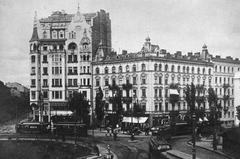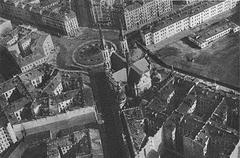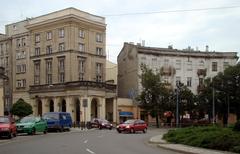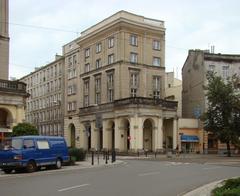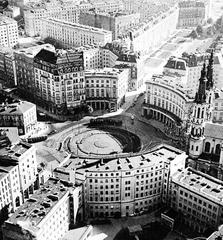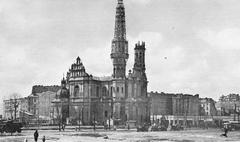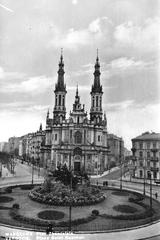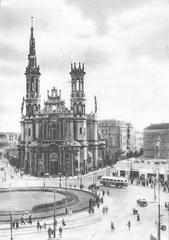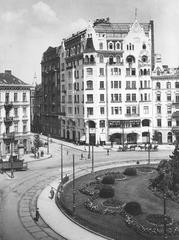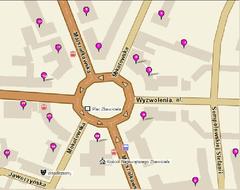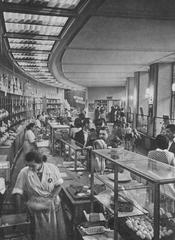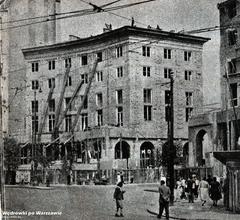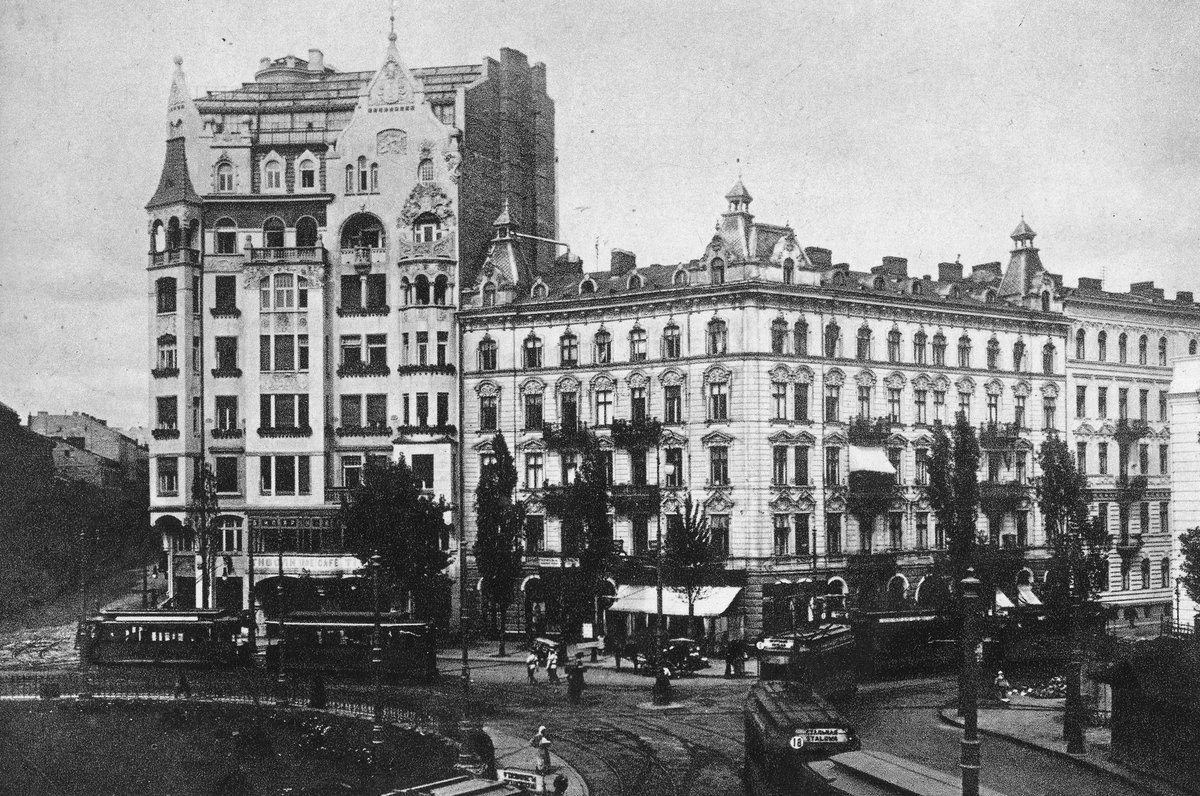
Saviour Square Visiting Hours, Tickets, and Travel Guide: Warsaw Historical Sites
Date: 14/06/2025
Introduction
Saviour Square (Plac Zbawiciela) is a quintessential Warsaw landmark, seamlessly blending deep historical roots, striking architecture, and a pulsating contemporary culture. Situated at the intersection of Marszałkowska, Mokotowska, and Aleja Wyzwolenia, this urban space has evolved from its 19th-century origins through the devastations of World War II into today’s vibrant social hub. The square’s centerpiece, the Church of the Holiest Saviour, anchors the area with its neo-Baroque grandeur, while the surrounding cafés, boutiques, and creative venues foster a lively and inclusive atmosphere. This comprehensive guide details everything you need to know about visiting Saviour Square, including hours, ticketing, accessibility, nearby attractions, and travel tips—ensuring you maximize your experience at one of Warsaw’s most beloved historical sites (e-a-a.com, start-magazine.squarespace.com, thecrazytourist.com).
Contents
- Historical Evolution of Saviour Square
- Architectural Heritage and Preservation
- Cultural and Social Significance
- Practical Visitor Information
- Visiting Hours and Tickets
- Getting There & Accessibility
- Guided Tours
- Dining and Entertainment
- Special Events
- Nearby Attractions
- Practical Tips for Visitors
- Frequently Asked Questions (FAQ)
- Conclusion & Call to Action
- Sources and Further Reading
Historical Evolution of Saviour Square
Origins and Early Development
Plac Zbawiciela emerged at the turn of the 20th century as Warsaw expanded beyond its historic core. Conceived as part of modern urban planning, the square was designed to serve a growing city and its cosmopolitan aspirations. Its name and identity are firmly linked to the Church of the Holiest Saviour (Kościół Najświętszego Zbawiciela), built from 1901 to 1927. The church, with its majestic twin towers and dome, quickly became the square’s focal point, surrounded by elegant tenement houses in eclectic and neoclassical styles.
Interwar Period and Urban Flourishing
Between 1918 and 1939, Plac Zbawiciela was a fashionable address for Warsaw’s middle and upper classes. Lively commerce, ornate facades, and grand entrances reflected the city’s prosperity and cosmopolitan spirit during this era.
World War II and Postwar Reconstruction
The devastation of World War II left the square in ruins. The Church of the Holiest Saviour and many surrounding buildings suffered severe damage. Postwar reconstruction saw a combination of faithful restorations and simplified rebuilds, reflecting both material shortages and modernist influences of the era (e-a-a.com). The church was meticulously restored, reclaiming its central role in the square’s identity.
Socialist Realism and Modernist Influences
The 1950s brought Socialist Realist architecture to Warsaw, but Plac Zbawiciela largely retained its prewar character. Nearby, the Eastern Wall of Marszałkowska Street exemplifies postwar Polish modernism and the city’s ongoing transformation (start-magazine.squarespace.com).
Architectural Heritage and Preservation
The square’s architecture is a tapestry of late 19th-century eclecticism, neo-Baroque, and postwar modernism. The Church of the Holiest Saviour stands out for its neo-Renaissance and neo-Baroque features. Surrounding tenements are prized for their stucco work and wrought-iron balconies, many of which have been carefully restored. The radial street layout and central greenery are hallmarks of grand European urban design from the era.
Ongoing restoration projects at Plac Zbawiciela and across Warsaw highlight the city’s commitment to preserving its architectural heritage, a process also evident in the reconstruction of the Old Town and Royal Castle (e-a-a.com).
Cultural and Social Significance
Plac Zbawiciela is a dynamic cultural and social nexus. Its central location and excellent transport links make it a natural meeting point for locals and visitors alike. The square has developed a reputation as “Hipster Square,” thanks to its creative scene, independent cafés like Plan B, and vibrant nightlife. Outdoor terraces buzz with activity, while the area hosts public events, seasonal markets, and demonstrations (start-magazine.squarespace.com).
A notable chapter in recent history was the “Rainbow” (Tęcza) art installation by Julita Wójcik, which became a symbol of inclusivity and a flashpoint for public debate between 2012 and 2015 (culture.pl).
Practical Visitor Information
Visiting Hours and Tickets
-
Saviour Square: Open public space, accessible 24/7.
-
Church of the Holiest Saviour:
- Monday–Saturday: 7:00 AM – 7:00 PM
- Sunday: 8:00 AM – 8:00 PM
(Hours may vary on holidays; check the official church website for updates.)
-
Tickets: No entrance fee for the square or church. Donations are welcomed at the church.
Getting There & Accessibility
-
Public Transport:
- Tram: Lines 10 and 14 stop directly at Plac Zbawiciela.
- Bus: Bus 175 from the city center stops at the square.
- Metro: The nearest station is Politechnika (Line M1), about a 10-minute walk.
- Walking: Easily reachable on foot from central Warsaw landmarks.
-
Ticketing: Use time-based or single-ride tickets valid across buses, trams, and metro. Purchase tickets at machines, kiosks, or via the Jakdojade app.
-
Accessibility: The square and church are wheelchair accessible, with wide sidewalks and step-free transport options.
-
Taxis & Ride-sharing: Reputable taxi companies (Glob Cab Taxi, iTaxi) and ride-sharing services (Uber, Bolt) operate citywide.
-
Electric Scooters: Providers like Lime and Bolt offer convenient short-range mobility in central Warsaw (In Your Pocket).
Guided Tours
Guided walking tours of Warsaw often include Saviour Square. These can be booked via local travel agencies or online platforms specializing in Warsaw’s history and architecture.
Dining and Entertainment
Cafés and Bistros
- Charlotte Menora: French-style bakery and café with outdoor terrace.
- Kawiarnia Relaks: Minimalist specialty coffee shop nearby.
Restaurants
- Nobu Warsaw: Japanese-Peruvian fine dining (Nox Agency).
- GOŚCINIEC: Traditional Polish cuisine (Najlepszewwarszawie).
- Restauracja Oliva: Mediterranean-focused menu.
Bars and Nightlife
- Plan B: Iconic bar, hub for Warsaw’s creative community.
- Panorama Sky Bar: Rooftop cocktails with city views.
Events and Culture
The square hosts seasonal open-air concerts, markets, art installations, and pop-up performances, especially in summer (Touropia). Nearby Mokotowska Street features designer boutiques and artisanal shops.
Nearby Attractions
- Łazienki Park: Warsaw’s largest park, home to palaces and the Chopin Monument.
- Ujazdowski Castle & Center for Contemporary Art: Modern art exhibitions close to the park.
- Warsaw University Botanical Garden: Over 5,000 plant species.
- Palace of Culture and Science: Iconic Soviet-era skyscraper with observation deck.
- Nowy Świat Street: Renowned for shopping and dining.
For a comprehensive list, see thecrazytourist.com.
Practical Tips for Visitors
- Best Times to Visit: May–September for outdoor events and terrace seating.
- Safety: The area is safe, but use basic precautions with valuables.
- Language: English is widely spoken in cafés and by younger locals.
- Currency: Polish złoty (PLN); cards accepted almost everywhere.
- Wi-Fi: Available in most cafés and restaurants.
- Tipping: 10% is standard in restaurants if service is not included.
Frequently Asked Questions (FAQ)
Q: What are the visiting hours for Saviour Square and the Church of the Holiest Saviour?
A: The square is always open. The church is open Monday–Saturday 7:00 AM–7:00 PM, Sunday 8:00 AM–8:00 PM.
Q: Is there an entrance fee?
A: No, both the square and the church are free to enter.
Q: How do I get there by public transport?
A: Tram lines 10 and 14, bus 175, and the Politechnika metro station serve the area.
Q: Are guided tours available?
A: Yes. Bookable through local agencies and online platforms.
Q: Is the square accessible for wheelchair users?
A: Yes, the square and church are accessible.
Q: Where can I find official information?
A: Consult the Official Warsaw Tourist Website and the Church of the Holiest Saviour website.
Conclusion & Call to Action
Saviour Square is a vibrant crossroads of Warsaw’s history, architecture, and modern city life. With its free and open access, rich cultural offerings, and proximity to major attractions, it’s an essential stop for any Warsaw visitor. Download the Jakdojade app for real-time transport updates, and consult our Warsaw travel guides for deeper exploration. Follow us on social media for the latest event updates and insider tips. Experience the spirit of Warsaw at Plac Zbawiciela!
